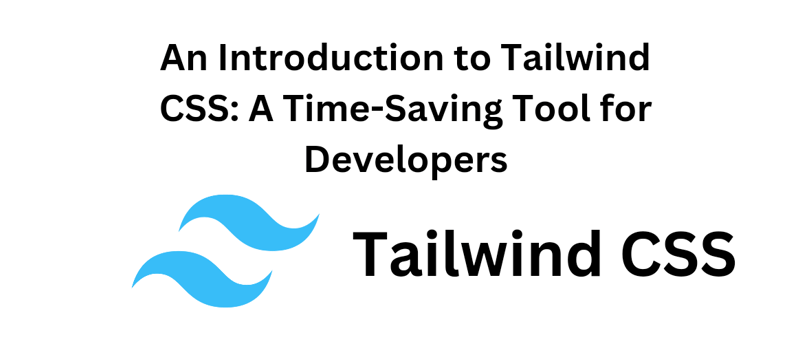An Introduction to Tailwind CSS: A Time-Saving Tool for Developers
Embark on a journey into the world of Tailwind CSS, a revolutionary utility-first CSS framework designed to streamline web development workflows. This article serves as an introductory guide for developers, exploring the core principles and benefits of Tailwind CSS. Discover how Tailwind CSS empowers developers to rapidly build stylish and responsive web interfaces by leveraging pre-defined utility classes. Dive into practical examples and learn how to harness the full potential of Tailwind CSS to expedite your development process, saving valuable time and effort. Whether you're a seasoned developer or a newcomer, unlock the power of Tailwind CSS and enhance your web development toolkit today.
PROGRAMMING


As a developer, finding ways to streamline your workflow and save time is always a top priority. One tool that has gained popularity in recent years is Tailwind CSS. In this article, we will explore what Tailwind CSS is, why it is crucial, and how to implement it in your website.
What is Tailwind CSS?
Tailwind CSS is a utility-first CSS framework that provides a set of pre-designed CSS classes that you can use to build your website. Unlike traditional CSS frameworks that focus on providing pre-built components, Tailwind CSS takes a different approach by offering a comprehensive set of utility classes that can be combined to create custom designs.
With Tailwind CSS, you can easily style your HTML elements by adding classes directly to your markup. This allows for a more efficient and flexible development process, as you can quickly make changes without having to write custom CSS from scratch.
Why is Tailwind CSS Crucial and Time-Saving for Developers?
There are several reasons why Tailwind CSS has become crucial and time-saving for developers:
1. Rapid Development:
With Tailwind CSS, you can rapidly build and style your website by leveraging the pre-designed utility classes. This eliminates the need to write custom CSS for every element, saving you valuable development time.
2. Consistent Design:
Tailwind CSS provides a consistent design language with a predefined set of utility classes. This ensures that your website maintains a cohesive look and feel throughout, even when different developers are working on different parts of the project.
3. Customizability:
While Tailwind CSS offers a comprehensive set of utility classes, it also allows for easy customization. You can configure various aspects of the framework, such as colors, spacing, and typography, to match your project's unique design requirements.
4. Responsive Design:
Tailwind CSS includes built-in responsive design utilities that make it easy to create responsive layouts. You can specify different styles for different screen sizes without having to write complex media queries.
How to Implement Tailwind CSS in Your Website?
Implementing Tailwind CSS in your website is a straightforward process:
1. Installation:
First, you need to install Tailwind CSS by adding it as a dependency to your project. You can use npm or yarn to install Tailwind CSS, or include it via a CDN.
2. Configuration:
Next, you will need to create a configuration file where you can customize various aspects of Tailwind CSS. This file allows you to define your color palette, spacing values, and other design-related settings.
3. HTML Markup:
To start using Tailwind CSS, you simply add the utility classes directly to your HTML markup. For example, to add a margin to an element, you can use the "m" class followed by a directional modifier (e.g., "m-4" for a margin of 4 units).
4. Building and Optimizing:
Once you have added the necessary classes to your markup, you can build and optimize your CSS using Tailwind CSS's build tool. This tool removes unused CSS classes, resulting in a smaller file size and improved performance.
Which Frameworks Does Tailwind CSS Support?
Tailwind CSS is a standalone CSS framework that can be used with any frontend framework or library. Whether you are using React, Vue.js, Angular, or any other framework, you can easily integrate Tailwind CSS into your project.
Official Website Link
To learn more about Tailwind CSS and get started, you can visit the official website at https://tailwindcss.com.
In conclusion, Tailwind CSS is a time-saving tool for developers that provides a comprehensive set of utility classes to streamline the development process. By leveraging these pre-designed classes, developers can rapidly build and style their websites while maintaining a consistent design language. With its customizability and support for responsive design, Tailwind CSS offers a flexible solution for creating modern and visually appealing websites.
